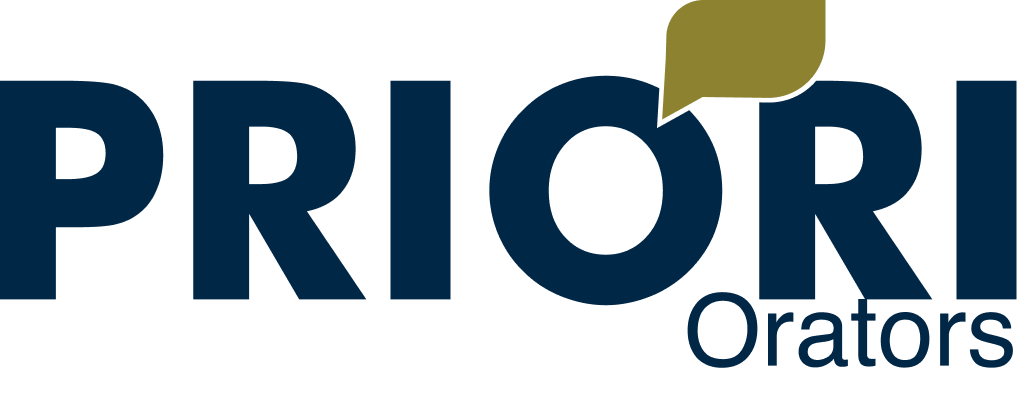The Mind’s Hidden Power to Heal and Transform: The Unexpected Influence of One Word

Have you ever taken a pill for a headache, felt better, and then discovered it was just a sugar tablet? Strange, right? But this mysterious experience isn’t just a medical fluke,it’s a window into the astonishing and largely untapped power of the human mind. That power, surprisingly, revolves around one word: Placebo. This isn’t just […]
The Semiotics Of Sacred Speech: Navigating The Sensitivities Of Religious Communication

In today’s interconnected world, religious communication sits at the heart of many public conversations, whether in the pulpit, the press room, the classroom, or the policy arena. Yet, despite its ubiquity, few are truly equipped to speak about faith in ways that are both intellectually rigorous and socially respectful. At Priori Orators, we believe this […]
The Glance Test: The Secret to Visual Confidence in Public Speaking

By Priori Orators “Your slide should support your story, not compete with it.”— Anonymous Presentation Coach Picture this. You’re halfway through a big pitch. The room is packed. Eyes are on you. Your slide clicks forward. But instead of nods of comprehension, you see squints. Frowns. People leaning in, trying to decipher your graph, read […]
Mental Evolution: The Uncharted Territories of Our Minds

We all carry with us a mental road map, a map composed not of streets, highways, or intersections but of memories, beliefs, emotions, and choices. Unlike a traditional road map that guides us physically from point Y to point Z, our internal maps are far more abstract, complex, and often uncharted. These mental territories are shaped by our experiences, cultural conditioning, personal goals, […]
Cryptography in Modern Communication

Have you ever paused to wonder what makes it possible to send a private message to someone thousands of miles away instantly, securely, and without worry?In an age where information travels faster than ever and privacy is more valuable than gold, one technology stands at the core of it all: cryptography. From protecting your passwords and […]
Semiotics: The Language You’ve Been Speaking Since Birth

Long before you learned your ABCs, you were fluent in a different kind of language – one with no grammar, no spelling, and no voice. Have you ever wondered how you instinctively know who’s in charge or who’s nervous in a room? It’s because you’re fluent in semiotics – the secret language of signs and symbols! Think about it: A red light, a suit, […]
Museums as Spaces for Stillness and Presence

A museum is more than a gallery of artifacts; it’s a space that invites us to stop rushing, stop performing, and simply BE. Museums offer more than just art and history; they invite us to pause, reflect, and breathe, allowing the stillness of these spaces to recharge both mind and spirit. Imagine standing before a masterpiece, feeling […]
How Healthcare Speakers Can Truly Connect With Their Audience

At Priori Orators, we know that connecting meaningfully with an audience requires far more than professional experience or polished speaking skills. For speakers addressing healthcare topics, success often lies in balancing clinical knowledge with genuine emotional connection. Audiences expect credible facts—but they also crave authenticity, human stories, and relevance, especially when conversations touch deeply on […]
Speaking Tips From Top Comedians: Humor Without the Jokes

Picture this: you’re delivering a talk to a room full of people, and they’re not just listening—they’re leaning in, smiling, nodding, and enjoying every word you say. No, you haven’t turned into a stand-up comic overnight. You’ve simply discovered the magic of humor—without ever telling a joke. At Priori Orators, we believe every speaker has […]
Presenting Yourself Professionally: In Person, On the Podium, and Online

Think about it—every time you speak, you are forming a connection. Whether you’re addressing an audience of 1,000, sitting across from a hiring manager, or posting on social media, your ability to present yourself professionally directly impacts how well your message is received. You could have the best ideas in the world, but if they aren’t communicated effectively, they will fall flat.
So, how do you put your best self forward in any setting? Whether you’re speaking in person, delivering a keynote address, or engaging in the digital space, professionalism in communication is key. Let’s dive into the strategies that will ensure you make a lasting impression in every interaction.

